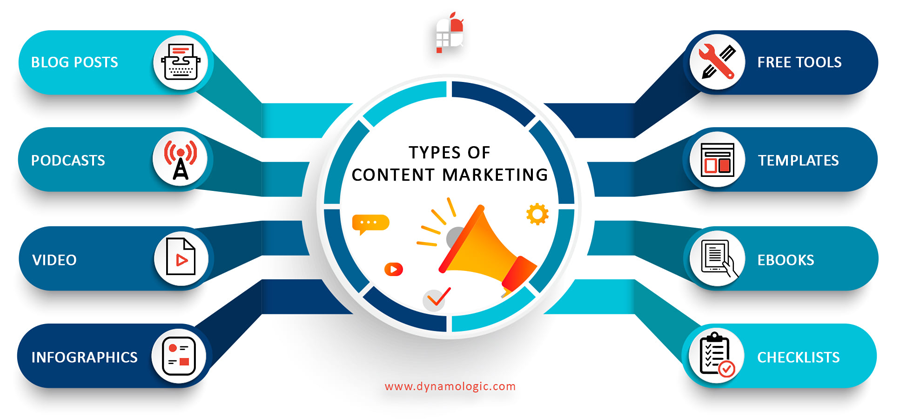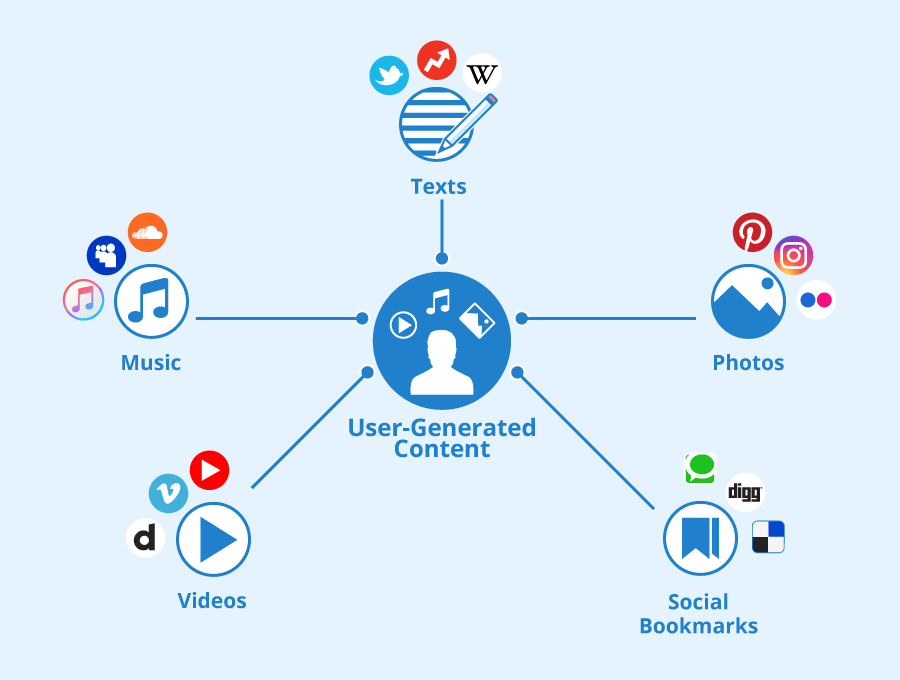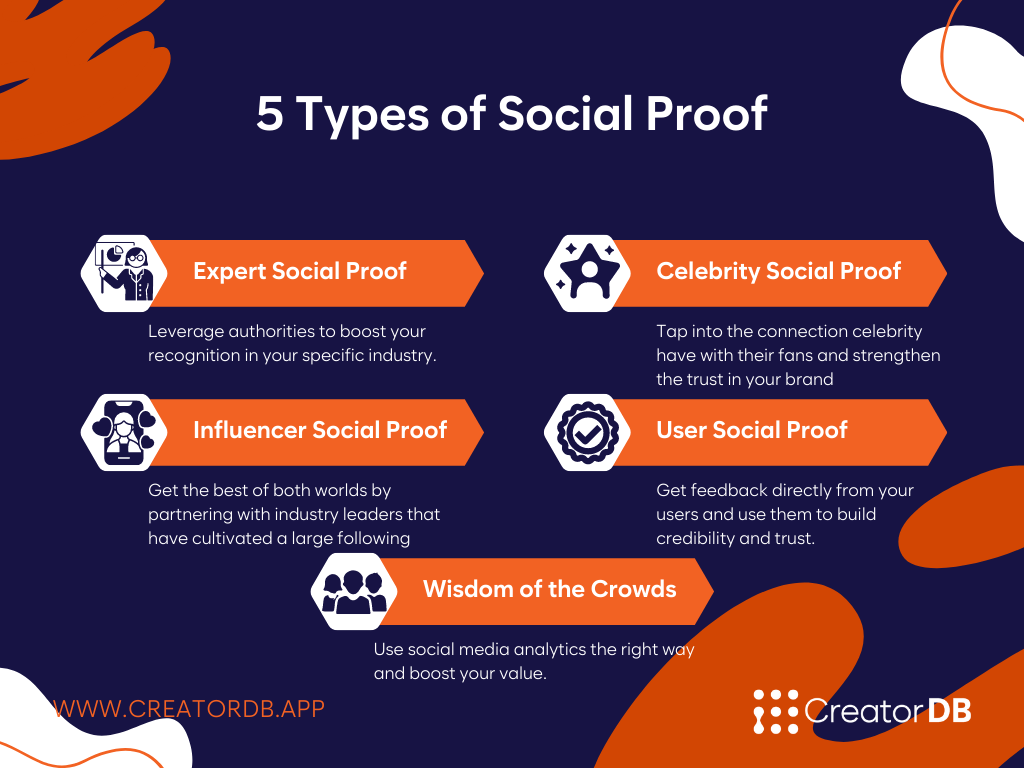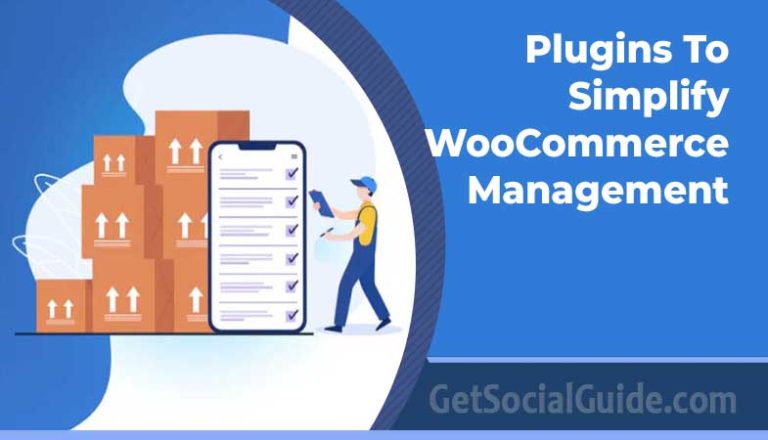15 Top Game-Changing SEO Tips For Ecommerce: Boost Your Online Store’s Visibility
In the dynamic world of ecommerce, where countless online stores are vying for attention, having a robust SEO strategy is essential for success.
Establishing an online store is a strategic move to harness the exponential surge in global e-commerce growth. The trajectory of total e-commerce sales is a testament to this opportunity, ascending from $1.3 trillion in 2014 to a staggering $5.7 trillion in 2022. As we peer into the horizon, projections by Statista paint a compelling picture, forecasting that by 2026, the cumulative worth of these sales will reach an astonishing $8 trillion.
The allure of venturing into the realm of online retail is underpinned by these remarkable figures. The digital marketplace has become a bustling ecosystem, where transactions unfold at the click of a button, bridging geographical divides and transcending time zones. The sheer magnitude of growth is a clarion call for businesses to embrace this digital revolution or risk missing out on an ever-expanding customer base.
Consider the transformational power of e-commerce. It erases the confines of physical brick-and-mortar boundaries, liberating businesses to showcase their products to a global audience. From artisanal crafts to cutting-edge technology, every niche finds its place in this virtual marketplace, fostering an environment where entrepreneurship flourishes and innovation thrives.
The ascent of e-commerce isn’t a transient trend; it’s a paradigm shift. Consumer behaviors have evolved, with online shopping becoming a staple of modern life. Convenience, variety, and accessibility fuel this surge, transforming the way individuals procure goods and services. The online store becomes a gateway to this thriving ecosystem, a storefront that never closes and a showroom that never empties.
As the horizon unfolds, the trajectory of e-commerce is resolute. The anticipated $8 trillion in total sales by 2026 is an affirmation that the digital marketplace is not just a buzzword; it’s a robust reality, a dynamic tapestry of transactions, interactions, and experiences.
In a landscape where the global marketplace converges on the virtual stage, establishing an online store is more than a business decision; it’s a testament to adaptability, a proclamation of foresight, and a declaration of readiness to embrace the limitless horizons of the digital age.
This article unveils game-changing SEO tips that will help your ecommerce business soar in search engine rankings, attract more potential customers, and ultimately boost your sales.
Game-Changing SEO Tips For Ecommerce
1. Prioritize Mobile Optimization for Ecommerce Success

it has become imperative for your ecommerce website to deliver an outstanding user experience regardless of the device being used. The significance of mobile optimization extends beyond just improving user engagement; it has now evolved into a pivotal element influencing your website’s standing in Google’s intricate algorithms. Therefore, it is of utmost importance to ensure that your website exhibits qualities of responsiveness, swift loading times, and user-friendliness on mobile platforms.
In this era where smartphones and tablets have seamlessly integrated into our daily lives, users expect websites to adapt effortlessly to the screens of various sizes. Responsive design, a cornerstone of effective mobile optimization, empowers your website to dynamically adjust its layout and content to suit the specific dimensions of the device. This not only creates a visually appealing interface but also guarantees that users can access all features and information without any hindrances.
Furthermore, the speed at which your ecommerce site loads on mobile devices has direct implications on user satisfaction and retention. A swift-loading website keeps users engaged and prevents them from bouncing off to competitors due to frustration over slow loading times. Research indicates that even a slight delay in loading can significantly impact conversion rates, underscoring the importance of optimizing images, minimizing code, and employing caching mechanisms to expedite loading times.
User-friendliness on mobile devices is synonymous with a seamless and intuitive navigation experience. Designing clear and easily clickable buttons, simplifying the checkout process, and streamlining the overall user journey are vital aspects that contribute to enhancing user satisfaction. Remember that the constraints of mobile screens demand concise yet informative content, avoiding clutter while conveying the necessary information effectively.
Crucially, Google’s search algorithms now prioritize mobile-friendliness as a key ranking criterion. Websites that are not optimized for mobile devices risk losing out on valuable organic search traffic. Therefore, investing in mobile optimization isn’t just about user experience; it directly impacts your online visibility and reach.
The mobile-driven era necessitates that your ecommerce website goes beyond the conventional desktop experience. To thrive in this environment, your website must be adaptive, swift, and user-centric on mobile platforms. By embracing responsive design, prioritizing fast-loading pages, and ensuring an intuitive interface, you not only satisfy user expectations but also secure a favorable position within Google’s ranking algorithms, ultimately contributing to the success of your ecommerce venture in the digital realm.
2. High-Quality Product Descriptions That Convert

The art of creating captivating and distinct product descriptions holds the power to profoundly influence your SEO endeavors. It involves seamlessly weaving pertinent keywords into your descriptions, while also shining a spotlight on the advantages and characteristics of your offerings. To truly captivate your audience, go a step further by narrating a narrative that deeply connects with their aspirations and requirements.
The incorporation of relevant keywords within your product descriptions serves a dual purpose. Not only does it signal search engines about the context and relevance of your offerings, but it also facilitates potential customers in discovering your products through organic searches. The key here lies in the seamless integration of these keywords, ensuring they flow naturally within the narrative you’re crafting.
However, it’s not just about stuffing keywords; it’s about showcasing the unique value your products bring to the table. Highlighting the benefits and features in your descriptions offers potential buyers a clear understanding of what sets your products apart. By articulating how your offerings solve problems or enhance their lives, you instill a sense of purpose and necessity that resonates deeply.
But let’s elevate the game. To truly engage your audience, you must harness the power of storytelling. Craft narratives that evoke emotions, trigger relatability, and create a connection. Weave a tale that intertwines seamlessly with the lives, aspirations, and desires of your target audience. By doing so, you transform your products from mere commodities to vehicles that facilitate the realization of dreams.
Picture your potential customer’s journey. They aren’t just buying a product; they’re embarking on an experience. Leverage this insight to create descriptions that transport them into a world where their desires are met and their problems are solved. Narrate how your product fits into their story, making it an indispensable part of their journey.
The synergy of compelling storytelling, strategic keyword integration, and a focus on benefits and features creates a potent concoction for impactful product descriptions. This fusion not only enriches your SEO strategy but also forges genuine connections with your audience. As you master the art of crafting descriptions that resonate, you not only entice purchases but also create a lasting bond between your brand and your customers.
3. Harness the Power of Long-Tail Keywords

Casting a wide net with broad keywords holds its significance, yet the integration of long-tail keywords presents a strategic advantage that can elevate your competitive stance. Long-tail keywords, characterized by their specificity, mirror the precise intentions of users, subsequently yielding elevated conversion rates. By delving into diligent research, identifying these long-tail gems that seamlessly align with your product offerings, and weaving them astutely into your content, you unlock a pathway to heightened success.
While broad keywords may cast a wide net and attract a substantial volume of traffic, they often grapple with ambiguity, catering to a range of intentions. In contrast, long-tail keywords, formed by multiple words or phrases, encapsulate the very essence of what users are seeking. This innate precision transcends into higher conversion rates as your content aligns closely with the needs and aspirations of those actively searching for solutions or products.
Embarking on the journey of researching long-tail keywords entails a deliberate understanding of your target audience’s pain points, desires, and online behavior. By leveraging tools and insights, you can uncover the nuanced phrases they utilize during searches, shedding light on the more specific queries that signify intent to purchase. These are your golden opportunities.
Once unearthed, these long-tail keywords should be seamlessly interwoven into your content strategy. Rather than a forced inclusion, treat them as the lynchpins around which your content orbits. Each piece of content becomes a beacon, guiding users who seek these exact solutions. This strategy not only bolsters your visibility but also positions you as the guiding light amidst the vast digital landscape.
Strategic integration of long-tail keywords doesn’t just end with standalone articles or product pages. Extend their application to your blog posts, FAQs, and even social media updates. By addressing the granular queries that users are asking, you cement your position as an authoritative source, a trusted advisor, and eventually, a preferred destination for their purchasing journey.
The amalgamation of broad keywords with the precision of long-tail keywords is a potent concoction. While broad keywords cast a wide net, long-tail keywords serve as the lighthouse guiding users with a definitive purpose. As you diligently research, identify, and seamlessly incorporate these nuanced phrases, you not only enhance your competitive edge but also establish a clear pathway to higher conversion rates and more meaningful customer interactions.
The process of finding long-tail keywords involves utilizing tools like Google’s “People also ask” feature or free keyword tools like Ubersuggest and Wordtracker. The former offers insights by presenting user-generated queries, helping to align content with user intent. The latter tools delve into the digital landscape, revealing potential long-tail phrases that might otherwise go unnoticed. These tools empower content creators to enhance relevance, visibility, and resonance with their audience’s language and queries. In essence, finding long-tail keywords is about understanding user intent, adapting content strategies, and securing a meaningful presence in search engine results.
4. Optimize Your Website’s Loading Speed

Consequences of a website that loads at a sluggish pace are two-fold: it fosters elevated bounce rates and exerts a detrimental influence on your SEO endeavors. To counteract this, optimizing your website’s loading speed becomes imperative. Employ tactics such as image compression, code minimization, and harnessing browser caching to streamline loading times. A speedier website not only gratifies your visitors but also garners the appreciation of search engines.
In the digital realm where instant gratification is the norm, a website’s loading speed holds the power to either captivate or repel users. The longer it takes for your pages to load, the higher the likelihood of visitors abandoning ship and navigating elsewhere. This unsettling trend of high bounce rates not only tarnishes user experience but also raises red flags in the eyes of search engine algorithms.
To alleviate these concerns, image compression stands as a stalwart technique. By optimizing images without compromising quality, you significantly reduce the amount of data that needs to be transmitted. This culminates in swifter loading times, ensuring that users are greeted with your content rather than a loading screen.
Code, while being the backbone of your website, can also be a silent contributor to sluggishness. By minimizing code, you trim the excess fat, allowing your website to execute operations more efficiently. This translates into a streamlined user experience as visitors navigate through your pages with increased agility.
Browser caching, another strategic maneuver, allows repeated visitors to experience even faster loading times. By storing certain elements of your website on a user’s device, subsequent visits require less data to be fetched from the server, resulting in quicker page loads.
The symbiotic relationship between loading speed and SEO cannot be underestimated. Search engines, cognizant of the impatience of users, prioritize websites that deliver content promptly. In this intricate dance, a faster website translates into better user experience, which in turn signals to search engines that your site is worth promoting.
The importance of an expeditious website cannot be overstated. Employ techniques like image compression, code minimization, and browser caching to ensure that your website not only captures and retains visitors but also enjoys the blessings of search engines. As loading times accelerate, user satisfaction soars, and your digital footprint expands, positioning your website for greater success in the ever-evolving landscape of the internet.
5. Create High-Quality Visual Content

The significance of visual content, encompassing images and videos, stands as a pivotal force. The infusion of high-caliber visuals not only elevates the user experience to new heights but also galvanizes engagement levels and sparks the spirit of sharing. However, an integral aspect often overlooked is the optimization of these visuals. By imbuing your images with descriptive file names and informative alt tags, you pave the way for them to resonate favorably with search engines.
The allure of high-quality visuals is undeniable. In the virtual corridors of ecommerce, where touch and feel are replaced by sight and perception, images and videos step into the spotlight. They allow potential buyers to scrutinize products, envision their usage, and establish a virtual connection with what lies beyond the screen. This immersive experience transforms browsing into an emotional journey, with visuals acting as the catalyst.
The engagement sparked by compelling visuals is a testament to their potency. Users are naturally drawn to images that captivate their attention and resonate with their desires. Whether it’s a product displayed from multiple angles or a video showcasing its utility, these visual elements fuel curiosity and entice prolonged interaction. As users delve deeper into your content, their likelihood to explore further and make purchase decisions surges.
The sharing culture, a cornerstone of the digital age, is emboldened by the visual spectacle. Visually appealing content is inherently shareable, serving as a conduit for users to broadcast their interests and tastes. Social media platforms become the canvas upon which your products are flaunted and discussed, expanding your reach exponentially. This organic ripple effect transforms customers into brand advocates, driving traffic and conversions in its wake.
However, the foundation of this entire visual symphony lies in optimization. An image’s journey in the digital landscape starts with its file name, which should be descriptive and reflective of its content. The utilization of meaningful keywords in these file names aligns seamlessly with search engines’ algorithms, enhancing discoverability.
Alt tags, another unsung hero, not only enhance accessibility for users with disabilities but also offer search engines crucial context about the images. Thoughtfully crafted alt tags, containing pertinent keywords, not only amplify your SEO efforts but also act as guiding lights for search engine crawlers navigating your content.
The role of visual content in ecommerce SEO is transformative. Through high-quality images and videos, you craft an immersive user experience, foster engagement, and fuel the fires of sharing. However, the secret sauce lies in optimization—assigning descriptive file names and crafting informative alt tags. By doing so, you harmonize the artistry of visuals with the science of SEO, ensuring your content shines bright in both the eyes of users and the algorithms that govern the digital landscape.
6. Leverage User-Generated Content

Empower your customers to contribute their voices by leaving reviews, ratings, and comments on your products. The potency of user-generated content transcends mere interaction—it serves as a powerful tool for bolstering credibility and trust. Moreover, it presents an ongoing wellspring of dynamic, pertinent content that holds immense appeal for search engines, thus fueling your SEO strategy.
The treasure trove of user-generated content isn’t solely about accumulating positive sentiments; it’s a gateway to authentic credibility. As customers share their candid experiences, prospective buyers gain insight into real-life interactions with your products. This transparency cultivates trust, dissolving the skepticism that often accompanies online purchases. Positive reviews and ratings resonate as endorsements from peers, creating a virtuous cycle of endorsement and affirmation.
Beyond trust, user-generated content bears the hallmark of relevance. The insights, opinions, and anecdotes shared by customers serve as a reservoir of fresh, meaningful content. This content isn’t contrived; it emerges from genuine interactions and resonates with potential buyers who seek a nuanced understanding of what your products offer. Search engines, in their quest to deliver value, hold this type of dynamic, user-centric content in high regard.
The symphony of user-generated content plays out in multiple dimensions. The spectrum ranges from concise star ratings that encapsulate sentiments succinctly, to detailed reviews that unveil a richer narrative. Comments exchanged between customers further enrich the tapestry, fostering a community where ideas are exchanged and queries are addressed.
From an SEO perspective, the allure of user-generated content is unmistakable. The constant influx of fresh narratives and keywords signifies to search engines that your platform is dynamic and up-to-date. The ever-evolving landscape of user-generated content aligns perfectly with the algorithms’ quest for current, relevant information—resulting in improved rankings and visibility.
Crafting a conducive environment for user-generated content requires more than just a suggestion. Actively invite customers to share their experiences and opinions. Facilitate discussions and respond to feedback, fostering a sense of belonging and community. Furthermore, showcase this content strategically across your website, not only to engage visitors but also to signal to search engines that your platform thrives on authentic interactions.
User-generated content is a dynamic force that transcends mere testimonials. It forges trust, resonates with authenticity, and fuels credibility. This content, enriched with real experiences, is a balm for search engines hungry for relevance. As you cultivate a space where customers’ voices flourish, you not only enhance the user experience but also foster an SEO strategy that thrives on the vibrancy of real interactions.
7. Invest in Influencer Partnerships

Forging partnerships with influencers within your industry holds the potential to catapult your reach beyond boundaries and cultivate invaluable backlinks. These influencers, with their unique prowess, wield the ability to craft genuine, resonant content that spotlights your products. This, in turn, amplifies your brand’s visibility and bolsters its standing as a credible authority.
The realm of influencer collaboration is akin to opening doors to unexplored territories. These industry stalwarts boast dedicated followings that span diverse demographics. By aligning your brand with their reach, you secure a passport to audiences that might have remained beyond your grasp otherwise. The influencer’s endorsement bridges the gap between your brand and this new audience, introducing your offerings in a context that resonates authentically.
Influencers, often viewed as tastemakers, hold sway due to their authenticity and relatability. Their recommendations aren’t akin to advertisements; they’re personal endorsements. This inherently trust-based relationship enhances the credibility of your products in the eyes of their followers. When influencers create content that showcases your offerings in real-life scenarios or narrates their experiences, a genuine connection is forged—a connection that compels their audience to explore what your brand has to offer.
The invaluable currency of backlinks, integral to SEO, is another jewel in the influencer collaboration crown. As influencers create content featuring your products, it often extends to their websites, blogs, or social media profiles. These content pieces act as bridges, leading their followers to your platform through strategically placed links. These backlinks, intertwined with authentic narratives, are viewed favorably by search engines, further enhancing your online authority.
The tapestry of influencer collaboration encompasses diverse forms of content. It could be a comprehensive review, a tutorial showcasing the utility of your products, or even a narrative-driven piece that weaves your brand seamlessly into the influencer’s life. This diversity ensures that your brand’s story is shared across multiple dimensions, resonating with a wider range of potential customers.
To embark on this journey, careful selection of influencers is paramount. Authenticity and alignment with your brand’s values are key determinants. As you build relationships with influencers, ensure that the collaboration is a two-way street, offering them value in return. Whether it’s monetary compensation, exposure to your audience, or access to exclusive products, a symbiotic partnership sets the stage for enduring collaborations.
The realm of influencer collaboration is a doorway to new realms of brand exposure and credibility. These industry leaders can generate content that resonates authentically with their audiences, magnifying your brand’s reach. Simultaneously, their content acts as bridges to your platform, weaving an intricate tapestry of valuable backlinks. As you engage with influencers, remember that the essence of these collaborations lies in authenticity, resonance, and the mutual value that they bring to the table.
8. Implement Structured Data Markup

Structured data markup, often referred to as schema markup, serves as a guiding light for search engines, enabling them to grasp the intricacies of your content’s context. This seemingly technical practice yields a cascade of benefits, with one prominent outcome being the generation of rich search results. These enhanced results, showcasing elements like product prices and reviews, possess the power to render your listings more captivating and alluring to users.
In the intricate dance between your content and search engines, structured data markup emerges as a choreographer. It infuses your content with a language that transcends words, signaling to search engines the underlying meaning and nuances of your information. This added layer of clarity empowers search engines to unravel your content’s context, facilitating more accurate and relevant presentation to users.
The magic of structured data’s impact is perhaps most pronounced in the realm of search results. When search engines comprehend the finer details of your content, they can embellish search listings with supplemental information. Imagine users stumbling upon a search result that not only showcases the product they’re seeking but also includes its price, star ratings, and reviews—this is the power of structured data in action.
Enriched search results are more than just aesthetically pleasing; they hold the potential to captivate users’ attention and drive click-through rates. The inclusion of pertinent details, like product availability, average ratings, and even cooking times for recipes, imparts an air of credibility and trustworthiness. In a landscape inundated with information, these enriched snippets stand out like beacons, beckoning users to explore further.
Implementing structured data markup involves injecting special code into your website’s HTML, weaving an invisible thread of context around your content. This markup conforms to a universal vocabulary, ensuring that search engines interpret it accurately. The structured data landscape spans diverse categories, encompassing products, articles, recipes, events, and more. Tailoring the markup to suit your content type ensures that the essence of your offerings is communicated effectively to search engines.
Structured data markup acts as a bridge, bridging the semantic gap between your content and search engines. This bridge culminates in rich search results that transcend the ordinary, injecting your listings with eye-catching information that beckons users. As you embrace structured data, your content is not just comprehended; it’s celebrated, resulting in search results that resonate with depth, relevance, and an undeniable allure.
9. Build a Strong Backlink Profile
![Game-Changing SEO Tips For Ecommerce 10 What is a Backlink Profile? [Detailed Guide for 2023] | LinkBuilder.io](https://optimise2.assets-servd.host/obedient-zorilla/production/images/Blog-internal-images/backlink-profile.png?w=1200&q=100&auto=format&fit=crop&crop=focalpoint&fp-x=0.5&fp-y=0.5&dm=1666433491&s=db368c60c57c3830259bfcfbf26c3e7c)
Securing high-quality backlinks from esteemed websites is a transformative force in the realm of ecommerce SEO. This process entails crafting a strategic approach that centers on cultivating links from reputable sources that bear relevance and authority within your industry.
The art of backlink acquisition is akin to crafting a mosaic of trust and credibility. The sources from which you garner these links function as stamps of approval, vouching for the value and legitimacy of your website. However, the true magic lies in the quality of these backlinks—relevance and authority become the guiding principles.
Relevance stands as the cornerstone of an effective backlink strategy. Seek out websites that share thematic affinities with your ecommerce venture. The interconnectedness between your offerings and their content ensures that the link resonates as a seamless extension of the conversation. This relevance, discernible to both users and search engines, enhances the impact of the backlink.
Authority, the second pillar, serves as a beacon of trustworthiness. Websites with established credibility, recognized industry presence, and substantial followership bestow a valuable endorsement upon your brand through backlinks. The bedrock of this endorsement is built upon the assumption that authoritative sources wouldn’t associate with content that lacks merit. Thus, the links become conduits through which your website’s credibility is amplified.
Developing a backlink strategy necessitates methodical exploration and outreach. Start by identifying sources that are not only authoritative but also actively engaged with your industry’s discourse. This might encompass industry blogs, news outlets, forums, and professional associations. Once you’ve shortlisted these potential allies, initiate a genuine outreach process that communicates the mutual benefits of collaboration.
Guest posting, a classic method, offers a platform to showcase your expertise while securing a valuable backlink. Crafting insightful articles that contribute to the discourse of these authoritative websites positions you as an industry thought leader, while the embedded backlink fortifies your SEO strategy.
Collaboration with industry influencers and experts offers a dual-pronged advantage. Not only does their endorsement carry weight, but it also opens doors to their networks, potentially expanding your reach. Interviews, joint webinars, and co-authored content are avenues for such partnerships.
The journey of acquiring high-quality backlinks is a meticulous dance of relevance and authority. As you craft a backlink strategy, remember that these endorsements are more than just links; they’re signals of trust and credibility. Seek out sources that align with your industry’s narrative, and fortify your strategy with collaboration and outreach. In this symphony of backlinks, your website’s resonance amplifies, contributing to a more prominent and authoritative stance within the digital landscape.

User experience emerges as a linchpin in the realm of SEO, holding the power to sway the tides of digital success. The crux of this endeavor involves crafting a website that not only beckons users but also facilitates their journey through clear navigation, distinct categories, intuitive menus, and a meticulously structured layout. This artful orchestration of elements culminates in a positive user experience that extends its influence beyond satisfaction to impact metrics cherished by search engines.
Navigation, akin to a compass guiding travelers, shapes the user’s expedition through your digital domain. A seamless, user-centric navigation framework imparts a sense of direction, enabling users to effortlessly navigate through your website. Clear categories and well-organized menus are the markers that prevent them from getting lost amidst a sea of information. As users access their desired destinations with ease, they find value in their interaction with your platform.
A well-structured layout mirrors the symmetrical architecture of a well-designed city. It provides coherence and logic, allowing users to explore your content without confusion. The strategic arrangement of elements, harmonized with intuitive design principles, offers users a logical path to follow. This journey, devoid of impediments, fosters longer dwell times—time spent engaging with your content, a metric highly prized by search engines.
The symbiotic relationship between user experience and SEO deepens as dwell times rise. Lengthier engagement signifies to search engines that your content is resonating with users, thereby validating its value. Moreover, the extended interaction contributes to lower bounce rates—a phenomenon where users exit your website without exploring further. Low bounce rates convey to search engines that your content aligns with user expectations, enhancing your standing in their algorithms.
In essence, a positive user experience functions as a mirror, reflecting not only satisfaction but also value. A website that is easy to navigate, with a coherent layout and intuitive elements, creates an environment where users linger and explore. This engagement, a manifestation of their contentment, reverberates through the metrics cherished by search engines—dwell times lengthen, bounce rates decrease, and your website ascends the ladder of digital significance.
The fusion of user experience and SEO isn’t a mere juxtaposition; it’s an intricate dance where each step influences the other. By crafting a website that is both user-friendly and search engine-friendly, you bridge the gap between human and algorithmic appreciation. As you orchestrate a symphony of navigation, categories, menus, and layout, you not only shape the user’s journey but also etch a narrative that resonates across the digital landscape, elevating your website’s prowess and prominence.

Enhance the credibility of your ecommerce platform by strategically showcasing an array of trust signals. Trust badges, certifications, and awards serve as powerful markers of your reliability and commitment to excellence, weaving a tapestry of trust between you and your potential customers. These visual affirmations resonate deeply, fostering a sense of confidence that transcends the digital realm.
Position these trust symbols strategically throughout your ecommerce site, ensuring they catch the eye and instill assurance. The presence of trust badges, with their icons of security and payment protection, communicates your dedication to safeguarding sensitive information, quelling concerns that often deter hesitant buyers. By displaying recognized certifications from reputable authorities, you underscore your adherence to industry standards, demonstrating a commitment to quality and professionalism that resonates strongly with discerning customers.
Imagine the impact of proudly showcasing accolades and awards that your business has garnered. These tangible manifestations of recognition serve as a testament to your prowess and dedication. They not only validate your offerings but also inject a sense of pride into your potential customers, who are more likely to associate themselves with a brand that stands out in a crowd of competitors.
As trust takes root, its effects ripple into multiple dimensions. Higher conversions naturally follow suit as customers find themselves more willing to make that crucial click to purchase. A seamless integration of these trust signals into your ecommerce site doesn’t just elevate your credibility; it creates a conducive environment for transactions to flourish.
Yet the benefits don’t end there. Search engines, those gatekeepers of the digital realm, also take note of these trust signals. Improved SEO rankings are a direct result of the positive user experience that trust signals facilitate. Search algorithms recognize the correlation between trust and user satisfaction, rewarding your site with higher visibility and more organic traffic.
In a world where online interactions can feel intangible and remote, trust signals bridge the gap, solidifying relationships between businesses and consumers. They transcend mere aesthetics, becoming the cornerstones upon which lasting connections are built. So, adorn your ecommerce site with these emblems of trust, and watch as your credibility blossoms, conversions soar, and your digital presence flourishes in the ever-expanding landscape of the internet.
12. Create an Informative Blog Section

A meticulously nurtured blog stands as a treasure trove of value for your audience, simultaneously propelling your SEO endeavors to new heights. The act of consistently crafting and sharing informative, captivating blog posts, intertwined with your products, industry dynamics, and solutions to customer predicaments, unfolds a dual magic. It beckons organic traffic while also adorning your brand with the mantle of expertise in your niche.
Consider the profound impact of regularly publishing insightful blog posts. Each piece you create becomes a beacon, drawing in individuals seeking knowledge, solutions, and inspiration. By addressing their queries and curiosities through well-crafted content, you not only satiate their hunger for information but also cultivate a loyal following that finds immense value in your offerings.
Furthermore, these blog posts serve as stepping stones toward fortifying your position in the digital landscape. With every piece you produce, you plant a seed of authority. Your readers begin to perceive your brand not just as a purveyor of products, but as a guiding light, illuminating the intricacies of your industry. This perception not only builds trust but also serves as a powerful catalyst for conversions.
The symbiotic dance between your blog and SEO is a spectacle to behold. Search engines thrive on fresh, relevant content that resonates with users’ search intent. Each well-constructed blog post becomes an invitation for search engine crawlers to explore your site and deem it worthy of higher rankings. As your posts align with the questions posed by searchers, you ascend the ranks of search engine results pages, basking in the spotlight of increased visibility.
Picture your blog as a living organism that breathes life into your digital presence. Every post you publish contributes to a vibrant tapestry of knowledge, positioning your brand as the go-to source. As readers find value, they’re more inclined to share your insights, amplifying your reach organically.
In a world where information is both currency and empowerment, your blog stands as a testament to your commitment to both your audience and your industry. Nurture it with care, infuse it with your expertise, and watch as it becomes not just a resource, but a pillar of influence that uplifts your brand and transforms casual visitors into devoted advocates.
13. Implement Secure and Accessible Payment Options

In the realm of ecommerce, safeguarding security emerges as an absolute imperative. Harness the power of HTTPS encryption to erect an impregnable fortress around user data and furnish a haven of secure payment options. This endeavor doesn’t solely fortify user trust but also wields a formidable influence over your site’s SEO rankings.
The mantle of HTTPS encryption ushers in a new era of digital fortification. By securing the communication channel between your website and its visitors, sensitive information like personal data and payment details are cocooned within an impenetrable shield. The assurance of data confidentiality acts as a beacon, summoning wary customers to engage with confidence, knowing that their information is shrouded from prying eyes.
Amidst this climate of cyber threats, the ‘S’ in HTTPS exudes a sense of safety that resonates with your audience. This security-centric approach transcends a mere technical upgrade; it lays the cornerstone of trust. Customers are more inclined to explore, transact, and revisit when they’re assured their interactions are safeguarded against potential risks.
Yet, the benefits cascade further. Search engines, those gatekeepers of the digital domain, are quick to recognize and reward security-conscious sites. As search algorithms evolve, they increasingly prioritize HTTPS-enabled websites in search engine result pages. Your commitment to encryption is tantamount to signaling search engines that your site is not just secure, but also worthy of higher visibility.
The relationship between HTTPS and SEO is symbiotic. Your adoption of HTTPS doesn’t merely fortify security; it aligns with the evolving landscape of search algorithms. As your website’s security stature ascends, so does its ranking potential. The result is a virtuous cycle where security begets visibility, visibility begets trust, and trust begets conversions.
Imagine your website as a citadel fortified with HTTPS encryption, standing tall amidst a digital landscape fraught with uncertainties. This fortified sanctuary beckons customers with its unwavering commitment to their safety. As they step across the virtual drawbridge, they’re met not only with a secure environment but also a pathway that leads to improved SEO rankings.
In an era where data is currency and trust is a prized asset, the shield of HTTPS is more than a security measure; it’s a proclamation of your dedication to user welfare and a declaration that your digital doors are open, secure, and welcoming.
14. Utilize Video Marketing

In the ever-evolving digital landscape, the rise of video content is undeniable, wielding the potential to wield a transformative influence on SEO. Embark on a journey of engagement by crafting captivating product demo videos, enlightening tutorials, and intriguing behind-the-scenes glimpses. These audiovisual narratives don’t just captivate users; they extend their stay on your site, casting a favorable spell on your SEO endeavors.
Imagine the power of product demo videos. They breathe life into your offerings, allowing users to visualize the very essence of what you provide. As they watch your products in action, understanding deepens, uncertainties dissipate, and the allure of ownership strengthens. This immersive experience holds visitors spellbound, reducing bounce rates and prolonging their stay on your digital domain.
Tutorials emerge as a beacon of guidance and empowerment. By demonstrating the optimal use of your products or offering insights into industry-related processes, you establish your brand as an educator and an ally in your users’ journeys. The more users engage with these tutorials, the more they dwell on your site, signaling to search engines that your content is valuable and worthy of higher rankings.
Venturing behind the scenes, you unveil a realm of intrigue. Sharing snippets of your daily operations, the personalities behind your brand, and the crafting of your products humanizes your business. It fosters a sense of connection that transcends the transactional, anchoring users in an emotional narrative that binds them to your brand. As they explore these hidden facets, their time on your site extends, positively impacting SEO metrics.
The marriage between video content and SEO is harmonious. Search engines recognize the immersive allure of videos, prioritizing websites that host them. As users revel in your visual tales, dwell time increases, a metric revered by search algorithms. The outcome? Improved SEO rankings that propel your digital footprint to greater prominence.
Envision your website as a cinematic canvas, waiting to be adorned with these engaging visual narratives. Each video is a brushstroke, crafting an experience that resonates deeply with your audience. As users traverse your site, captivated by your content, the algorithms take note, rewarding your commitment to providing value.
In an era where attention spans are fleeting, video content emerges as the antidote, holding users in rapt attention. It’s not just about the content; it’s about the emotions stirred, the knowledge imparted, and the experiences shared. With every click of the play button, you’re not just creating videos; you’re crafting an unforgettable journey that weaves together engagement, connection, and the tapestry of enhanced SEO rankings.
15. Optimize for Voice Search

In a landscape increasingly dominated by the expansion of voice search technology, the art of optimization for voice search queries emerges as a strategic necessity. Your compass? Conversational keywords and phrases, those linguistic fragments users are predisposed to utter when engaging with voice assistants.
Imagine the dynamics of voice interactions. They transcend the staccato rhythm of typed searches, embodying the natural cadence of human conversation. In this realm, keywords evolve into conversational cues, reflecting the queries users are inclined to voice aloud.
Center your optimization efforts around these conversational gems. Think beyond the traditional string of keywords and delve into the nuances of how people actually speak. Instead of a terse “best coffee shops,” envision the more casual “Where can I find the best coffee shops?” By embracing these natural phrasings, you bridge the gap between technology and human interaction.
Consider the rise of question-based queries. Voice search often takes the form of questions posed to digital companions. Anticipate these queries by structuring your content to address them directly. For instance, if your website offers cooking tips, optimizing for “How do I make a chocolate cake from scratch?” transforms into a golden opportunity for engagement.
Your compass points not only to the words themselves but also to their context. As users employ voice search to seek information, they often reveal their intent more explicitly. Tailor your content to these intents. For instance, if someone inquires, “What’s the best smartphone camera?” crafting content that lists and compares various smartphone cameras becomes an avenue of catering to user needs.
The synergy between voice search and SEO is symbiotic. By aligning your content with the conversational phrases users employ, you not only augment your relevance but also foster longer interaction times on your site. This resonates positively with search algorithms, elevating your SEO rankings and solidifying your digital presence.
As voice search evolves from a novelty to a cornerstone of digital engagement, your journey toward optimization takes the form of a conversation. Listen to the language of your audience, anticipate their spoken queries, and craft your content as an answer to their voiced curiosities. In this realm, your words become a bridge, connecting you directly to the hearts and minds of users in a way that resonates deeply and resonates powerfully.
FAQs
Can these SEO tips be applied to all types of ecommerce businesses?
Absolutely! These tips are applicable to ecommerce businesses across various industries and niches. Whether you’re selling fashion, electronics, or handmade crafts, optimizing your website for search engines is crucial.
How long does it take to see results from these SEO strategies?
SEO is a long-term strategy, and results may vary depending on factors like your industry, competition, and the quality of your implementation. While some improvements can be seen within a few months, significant results often require consistent effort over a longer period.
Is it necessary to hire an SEO agency for ecommerce SEO?
While hiring an SEO agency can provide expertise and save you time, many ecommerce businesses have successfully implemented these strategies in-house. It’s essential to understand your business’s needs and resources before making a decision.
Yes, social media signals can indirectly impact your SEO efforts. Engaging content and sharing on social media can lead to increased website visits, brand exposure, and potential backlinks—all of which contribute to your SEO performance.
Are there any tools that can help with ecommerce SEO?
Yes, several tools can assist with ecommerce SEO, such as Google Analytics for tracking website performance, SEMrush for keyword research, and Moz for backlink analysis. These tools provide valuable insights to refine and improve your SEO strategy.
How often should I update my product pages and content?
Regular updates to your product pages and content are beneficial for SEO. Aim to refresh your content periodically to reflect changes in your products, industry trends, and customer preferences. This keeps your site relevant and engaging for both users and search engines.
Conclusion:
Embracing these SEO tactics for your ecommerce venture isn’t just about algorithmic mastery; it’s about weaving a tapestry of value, relevance, and resonance. As you navigate the realms of optimization, content creation, and strategic direction, you unearth a pathway to prominence. This pathway isn’t just a route to success; it’s an avenue to establishing a digital legacy that captivates, engages, and endures in the ever-evolving landscape of the internet.
In conclusion, these game-changing SEO insights hold the potential to reshape the trajectory of your ecommerce journey. By harnessing the power of optimization, content, and strategic ingenuity, you sculpt an online presence that stands as a beacon of value and connection. With unwavering focus and an appetite for growth, you pave the way for your online store’s ascent to prominence, all while engaging your target audience in ways that transcend mere transactions.



